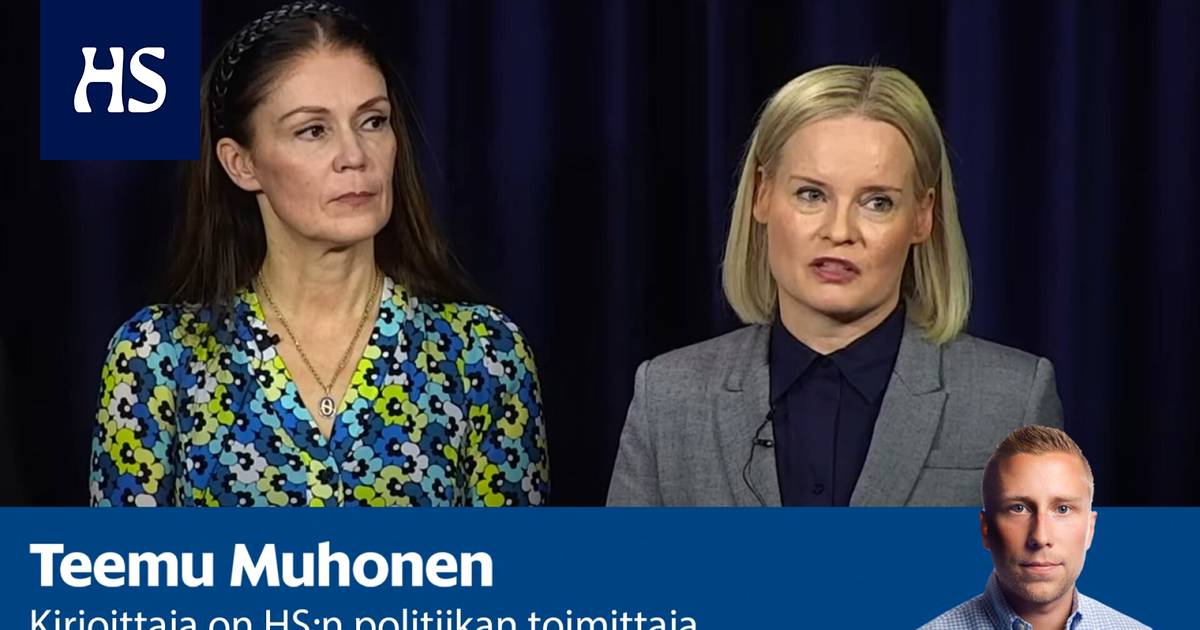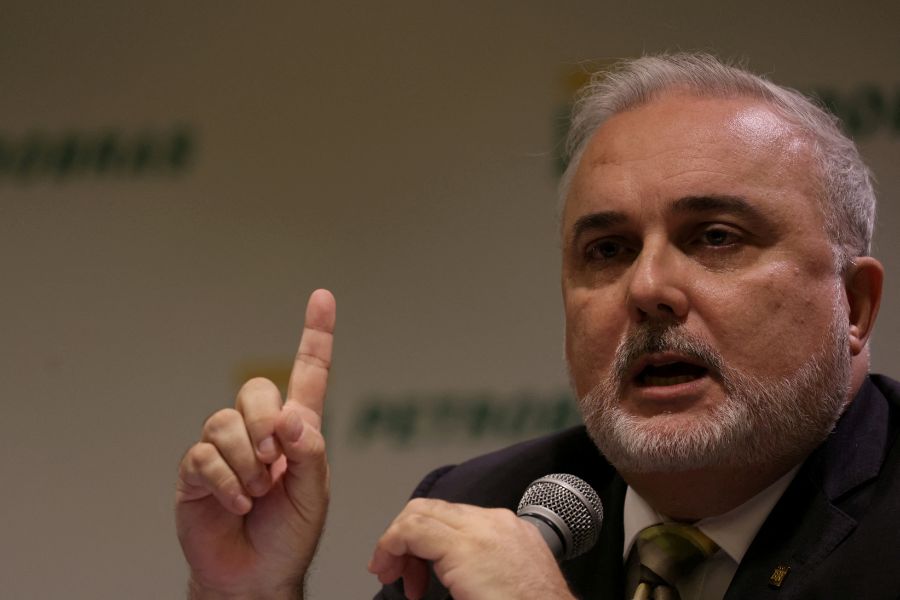According to Riikka Purra, the austerity program would only target administrative expenses, while according to Lulu Rantee, it would cover all public expenses. The difference in interpretations is huge, political journalist Teemu Muhonen writes in his analysis.
Basic Finns chairman Riikka Purra and deputy chairman of the parliamentary group Lulu Wrist presented the party’s economic program together in January. Now they interpret its content in quite different ways.
It is clear that the party would reduce public indebtedness in the next election period, for example by cutting a total of more than one billion euros from development aid, immigration costs and Yle’s funding.
However, one of the party’s key means of saving money is an extensive savings program for various administrative sectors.
“Finland’s economy must be balanced within two election periods by setting an annual savings target of approximately 2-4 percent for each administrative branch. However, it is important to leave out of the adjustment measures the personnel necessary for the running of the welfare state intended for Finns, such as teachers, nurses and policemen”. in the economic program it is said.
Ambiguous the registration has raised questions: is the annual saving of 2-4 percent calculated from all expenses of each administrative branch or only from administrative expenses, i.e. for example government personnel expenses?
The difference between the options is huge. If the austerity program targeted all expenses except for the exceptions listed by basic Finns, at the end of the election period, state expenses would have been reduced by 5–10 billion euros. If, on the other hand, the austerity program only focused on administrative expenses, state expenses would decrease by around 400–800 million euros.
Helsingin Sanomat asked Purra and Rante whether the annual savings target of 2–4 percent would be aimed at all expenditures in the administrative sectors or only at administrative expenditures.
“The whole pot”, Ranne answers on the phone.
“To the government”, Purra, on the other hand, signals.
“
Chairman Purra’s word carries more weight.
Because Purra is the chairman of the party, his word carries more weight. Purra has also been consistent in its interpretation.
“This savings target for administration in different administrative sectors is related to the fact that our public sector is quite inefficient. Public administration has been expanded during this government term as well. The minister cannot go into the administration and say that this position is now useless. We provide the framework, that is, we tell you that this has to be achieved, and in the administration, someone with official responsibility makes these decisions and offers them to political decision-makers”, Purra described the presentation Ylen in an interview with Politiikkaradio In the beginning of March.
Budget Manager Mika Niemelä states that the government’s operating expenses are 7.7 billion euros, of which around 5 billion are personnel expenses and around 2 billion are purchases of services. When the operating expenses of the Defense Forces and the police are removed from the figures, the remaining expenses are about 5 billion euros.
Based on Purra’s speeches, these expenses would therefore be cut by approximately 2–4 percent every year. In this case, annual expenses would be reduced by 400–800 million euros by the end of the government term.
It would be a kind of state administration efficiency program that has been implemented before.
Lulu Wrist again says that just by cutting government spending, savings will not be enough to balance the public finances. Ranne is right about that.
He can’t say exactly where the billions of euros in savings he’s saving would come from. According to him, it would be important to improve and rationalize the use of public money year after year.
However, no amount of streamlining the bureaucracy would be enough to save billions of euros. It would inevitably also require, for example, cutting income transfers or curtailing citizen services. Basic Finns is not ready for these actions.
Basic Finns is not the only party whose economic policy is unclear or hopeful.
Already in the next election period, Sdp aims to save billions in public finances by strengthening economic growth and improving employment. However, the Prime Minister’s Party mainly presents measures such as education investments, which will only have an effect after a long time.
Read more: Sdp’s financial line is largely based on wishes
Read more: The coalition would return Finland to the time of the cuts, but there is still a big gap in its plan
The coalition has presented detailed, tangible cuts to, for example, social security, but the party’s multi-billion dollar proposals for enhancing public administration and social and health care are quite circular.
The center has said that it supports significant cuts “without ruling out any target”. However, the party avoids naming the cut sites as best it can and rather presents spending increases and tax reductions in its program.
The economic views of the major parties are important, because possible cuts of billions of euros and tax increases would affect countless Finns.
In the answers HS’s election machine shows how right-wing candidates are more willing to cut benefits or services than left-wing candidates:
Read more: Could you collect the savings of six billion? In HS’s special article, try out which expenses you would cut and which taxes you would tighten
Read more: VM: Finland will soon take on a debt of up to 15 billion euros per year
#Analysis #leading #figures #Basic #Finns #disagree #partys #key #savings #measure #means









.JPG)